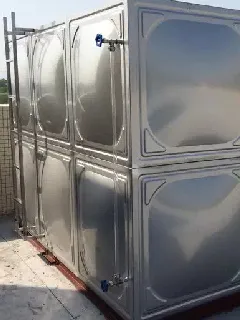loading...
- No. 9, Xingyuan South Street, Dongwaihuan Road, Zaoqiang County, Hengshui, Hebei, China
- admin@zjcomposites.com
- +86 15097380338
- Welcome to visit our website!
fiberglass bar grating
Understanding Fiberglass Bar Grating A Versatile Solution for Various Applications
Fiberglass bar grating, often referred to as fiberglass reinforced plastic (FRP) grating, is becoming an increasingly popular choice in various industries due to its unique properties and benefits. This innovative material combines the strength of fiberglass with the durability of resin, resulting in a lightweight yet robust solution suitable for several applications.
One of the primary advantages of fiberglass bar grating is its corrosion resistance. Unlike traditional metal grating, which can rust and degrade over time in harsh environments, fiberglass grating can withstand exposure to chemicals, moisture, and UV radiation. This makes it an ideal choice for environments such as wastewater treatment facilities, chemical processing plants, and food processing areas, where corrosive substances are commonly present.
Moreover, fiberglass bar grating is incredibly lightweight compared to metal options. This characteristic not only makes it easier to handle and install but also reduces the overall load on the supporting structures, leading to cost savings in both material and labor. Despite its light weight, fiberglass grating doesn’t compromise on strength. It boasts high load-bearing capacity, making it suitable for heavy-duty applications where durability is crucial.
Another important feature of fiberglass bar grating is its slip-resistant surface. When installed correctly, it provides excellent traction, reducing the risk of slips and falls in environments where moisture or spills may occur. This is particularly beneficial in industrial settings, where worker safety is paramount. Additionally, fiberglass grating is available in various textures and colors, allowing for customization to meet specific aesthetic or safety requirements.
fiberglass bar grating

Installation is another area where fiberglass bar grating shines. It is typically available in panels or sections that can be easily cut and fitted to the required specifications. The installation process is straightforward and can often be completed with minimal tools and equipment. This ease of installation not only saves time but also significantly reduces labor costs, which is a significant advantage for businesses looking to optimize their operational budgets.
Furthermore, fiberglass bar grating is environmentally friendly. As it is made from recyclable materials, its use can contribute to sustainable practices within industries. Companies increasingly recognize the importance of green initiatives, and opting for fiberglass solutions reflects a commitment to reducing their environmental footprint.
In terms of maintenance, fiberglass grating is relatively low-maintenance. Its non-porous surface resists staining and is easy to clean, requiring only periodic washes with standard cleaning agents. This characteristic ensures that facilities maintain a clean and professional appearance without a significant time investment.
In conclusion, fiberglass bar grating represents a modern, dependable, and efficient solution for various applications across multiple industries. Its corrosion resistance, lightweight nature, slip-resistant properties, ease of installation, and low maintenance requirements make it a preferred choice for engineers, architects, and facility managers. As industries continue to prioritize safety, durability, and sustainability, the demand for fiberglass bar grating is likely to grow, solidifying its role as a fundamental building material for the future.
-
The Rise of FRP Profiles: Strong, Lightweight, and Built to LastNewsJul.14,2025
-
SMC Panel Tanks: A Modern Water Storage Solution for All EnvironmentsNewsJul.14,2025
-
GRP Grating: A Modern Solution for Safe and Durable Access SystemsNewsJul.14,2025
-
Galvanized Steel Water Tanks: Durable, Reliable, and Ready for UseNewsJul.14,2025
-
FRP Mini Mesh Grating: The Safer, Smarter Flooring SolutionNewsJul.14,2025
-
Exploring FRP Vessels: Durable Solutions for Modern Fluid HandlingNewsJul.14,2025
-
GRP Structures: The Future of Lightweight, High-Performance EngineeringNewsJun.20,2025
